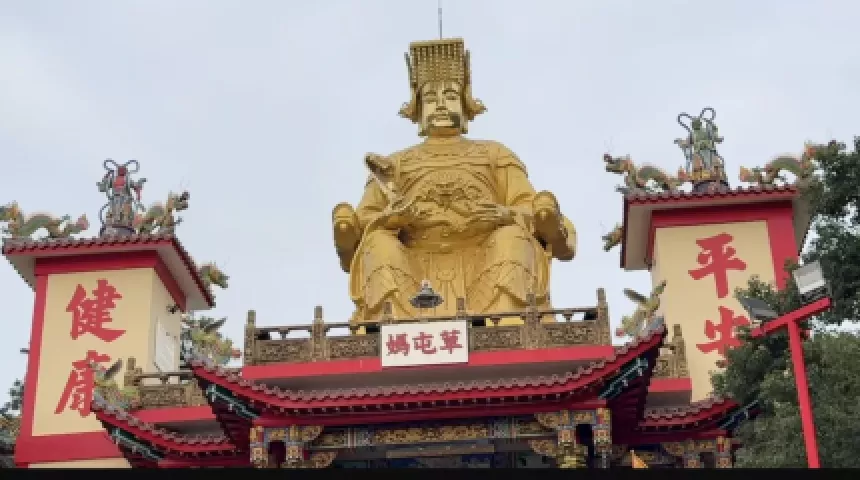Indigo dyeing renaissance in Hakka village
Few people are aware that in the 18th century Kaohsiung’s Meinong village was a center of indigofera plant cultivation and production of indigo dye in Taiwan, which was one of the main industries in the country at the time. In the wake of the Industrial Revolution, the cheapness and speed at which chemical dyes were produced had a huge impact on traditional Taiwanese handicraft industries.
Then, with the introduction of tobacco cultivation to Meinong during the Japanese colonial period, and falling prices of traditional indigo dye, memory of the indigofera fields gradually vanished from the hearts and minds of Meinong people. Recently, however, teachers and students at Hunag Xing Elementary School (廣興國小) have been working hard to bring back the indigo tradition to Meinong. The indigofera plants are started from seed and planted out in the fields when the seedlings are about 10 cm high, which improves the plant’s chances of survival.
Principle of Hunag Xing Elementary School, Xie Hu-jun (謝惠君), said that resurrecting the traditional “skills” and “memories” of the indigo industry is extremely important for Hakka culture. It is hoped that students will use the age-old wisdom and deep cultural base of past generations to breathe new life into the indigofera plant.
URL:https://www.peopo.org/news/274199
(以下是中文對照)
客家 藍衫 染鄉絲

很少人知道,高雄市的美濃在18世紀時,曾經是「木藍」的天下,栽種木藍並加工製造成藍靛,是當時台灣重要的產業之一。隨著工業革命,化學染料的製作既便宜又快速,為這項傳統手工業帶來衝擊;加上日治時期美濃地區引進種植菸葉,傳統藍靛染色的經濟價值衰退,木藍田也就漸漸消失在美濃人的記憶裡。近期,為了復育木藍,廣興國小的師生們從播種開始執行,等木藍苗生長至10公分左右,再移植到田區栽種,以提高植株的存活機率。廣興國小謝惠君校長表示:復育木藍,是對客家文化「技」與「憶」的傳承,期許學生能傳承先民的智慧,在深厚的文化基礎上,賦予藍染嶄新的生命。




回應文章建議規則: